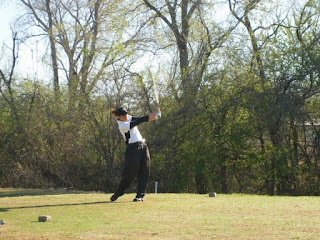You're a what?!
I think every Speech-Language Pathologist has had that
moment where they are introducing themselves or being introduced and that time
comes where you say what you do for a living…
Me: ”I’m a Speech-Language Pathologist.”
Communication Partner: “You’re a what?”
Me: “A Speech-Language Pathologist.”
Communication Partner: “Oh a speech teacher!”
That dialogue could go on and on, I have heard many
variations such as:
“so you teach /r/’s,”
“oh, you fix hearing!”
“I hated my speech teacher”
“I loved my speech teacher!”
and…
“what is that?”
So my hope for this post is to help clear up what a
Speech-Language Pathologist does!
Speech-Language
Pathologists provide prevention services, screenings, assessments/evaluation,
consultations, diagnosis, treatment, intervention, management, counseling, and
collaboration involving various
communicative disorders and swallowing disorders (dysphagia).
Within our scope of practice
we work with people of all ages (birth and on up)! Below are a few examples of
specific areas we work with:
Articulation: Yes we do teach kids and adults how to say their /r/ sound! We
also work with all of the other phonemes (sounds) produced!
Augmentative Alternative Communication (AAC): Some people do not
communicate through a verbal modality, or there are some people that need help
communicating along with their verbal modality. AAC can include use of sign
language, facial expressions, gestures, visual-graphic symbols, communication
devices, etc.
Aural Rehabilitation: this treatment is specifically for patients with hearing
loss, we collaborate with ENT’s and Audiologists to help enhance communication
in anyway we can!
Central Auditory Processing: I would write my own little tid-bit here but ASHA
really says it best in their technical report from 2005…“Broadly stated,
(Central) Auditory Processing [(C)AP] refers to the efficiency and
effectiveness by which the central nervous system (CNS) utilizes auditory
information.” So it’s not a hearing loss but how we process what auditory
information is coming in.
Cognitive Deficits: Shortly put this includes attention, memory, and
executive functioning skills – typically we see deficits in these area’s with
adults secondary to Stroke, Traumatic Brain Injury, an Anoxic event or a
Degenerative Disease. I also work with cognitive deficits with some of my kid’s
that may have experienced a stroke, TBI, etc.
Dysphagia: basically difficulty with swallowing – this can be in the oral
stage or the pharyngeal stage. I’ll be posting more about Dysphagia in this
blog – it is one of my favorite parts of our field!
Expressive and Receptive Language: Within both of these areas
we are looking at several things to make the patient as successful as possible
with communication. Some patient’s only
have an expressive language disorder, some only have a receptive language
disorder, and some have a mixed receptive and expressive language disorder. In
both Expressive and Receptive Language the following are crucial:
Semantics – vocabulary
Syntax
– the rules that govern our sentence structure. The rules of American English
sentence structure are different than Spanish.
Morphology – in essence grammar rules
Pragmatics
– the social use of language, topic initiation, topic maintenance, eye contact,
personal space, appropriate topics, etc.
Fluency: Yes we work with patient’s who have dysfluency aka stutter. If
you haven’t seen the King’s Speech I highly recommend it!
Motor Speech Disorders:
*Dysarthria: muscle weakness of the
mouth, face, and or respiratory system that may cause difficulty with
communication. We typically see this in adults who have experienced a stroke or
a TBI. If you are suddenly experiencing “slurred” speech, drooling, or
“mumbling” get yourself to a doctor – you may be having a stroke! We also see
dysarthria in children with low muscle tone such as Down’s syndrome.
*Apraxia of Speech and Childhood Apraxia of
Speech: Again, I believe ASHA says it best “Childhood apraxia of speech (CAS)
is a motor speech disorder.
Children with CAS have problems saying sounds, syllables, and words. This is
not because of muscle weakness or paralysis. The brain has
problems planning to move the body parts (e.g., lips, jaw, tongue) needed
for speech.” The cause in adults is typically from a TBI or Stroke, with
children we are still searching for the cause!
Voice Disorders: various voice disorders are among us, typically we
think of a person that overwork their vocal folds and develop a nodule but
there is so much more! Here are just a few examples:
*Laryngectomy,
vocal fold paresis, Reinke’s edema, spasmodic dysphonia, etc. The list goes on
and on!
I’m sure that I have missed
some part of our amazing field, my apologies! Keep in mind that this was a
brief overview of the field of Speech-Language Pathology! If you see something
that you have a question about please let me know I would be glad to expand
upon any of the above! Below are some fabulous resources from ASHA where some of
my information above came from.
http://www.asha.org/public/speech/disorders/childhoodapraxia.htm




OK, I really learned something! I might be a candidate for aural rehabilitation sooner rather that later!
ReplyDelete